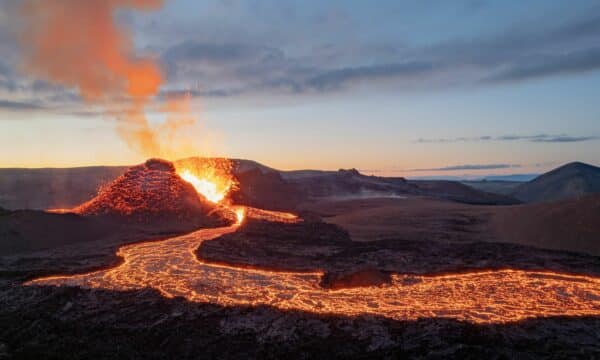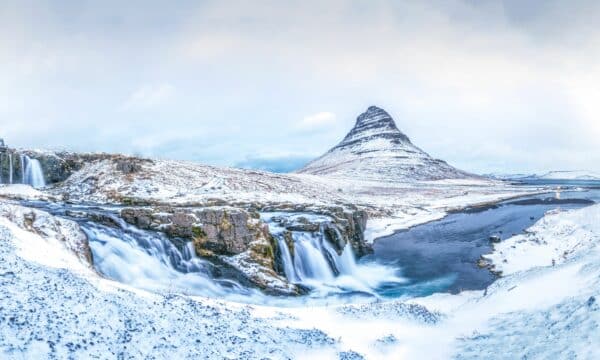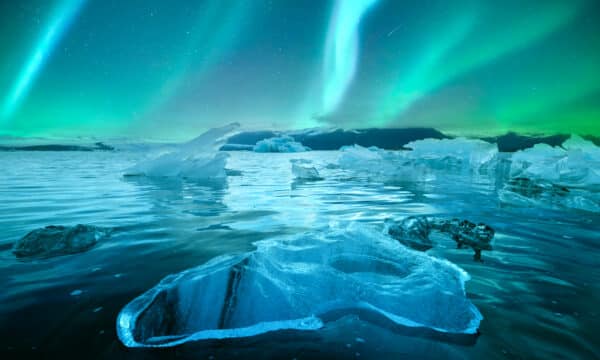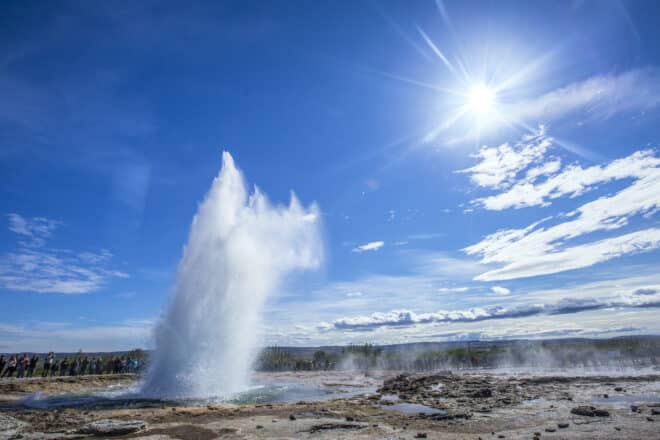
Þingvellir National Park, Geysir Geothermal Area and Gullfoss Waterfall make up the Golden Circle sightseeing trail. It serves as a great introduction to Iceland’s diverse landscapes and is a must-see for all visitors to this country. With breathtaking natural features such as waterfalls, geysers, hot springs, and lava fields, you can easily make a day out of this enchanting area.
But what makes the three sites that make up the Golden Circle so special? How long does it take to drive the Golden Circle, and what else can you do while there? Read on to learn all about Iceland’s most popular sightseeing route, the Golden Circle.
Þingvellir National Park
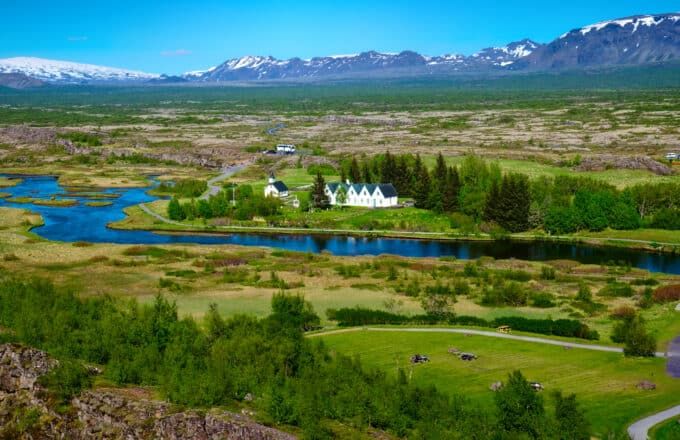
Þingvellir is a national park in South-West Iceland, about 40 km (25 miles) from the capital city, Reykjavík, and often one of the first stops of the Golden Circle route. It is renowned for its natural beauty and its place in history.
The national park was founded in 1930, making it the first national park in Iceland. But the site’s history reaches back over a thousand years. It was here where Viking Age settlers gathered to lay the laws of the land and dispense justice, thus forming Iceland’s society. In 930, Iceland’s parliament, Alþingi, was founded at Þingvellir, making it one of the oldest surviving parliaments in the world.
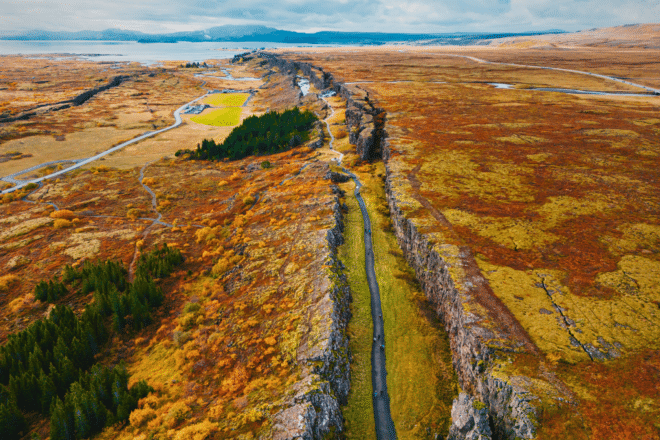
Þingvellir’s cultural importance was one of the reasons the park was designated as a World Heritage Site in 2004 by UNESCO. However, although it got its status based on cultural criteria, the site may also qualify on geological criteria. That is because Þingvellir is neither located on the European nor the N-American tectonic plates. Instead, it is in a rift valley between the two.
The continental plates are in constant motion (although too slow to see with the naked eye), so the landscape where these plates meet is very unique. At Þingvellir, it appears in the form of lava fields and dramatic fissures and canyons. The largest of these is Almannagjá Canyon which also marks the eastern boundary of the N-American tectonic plate.
Note that self-drive visitors to Þingvellir National Park must pay a small parking fee in the designated parking area. However, the parking fee is included in all of the guided package tours offered on Traveo.
Silfra Fissure
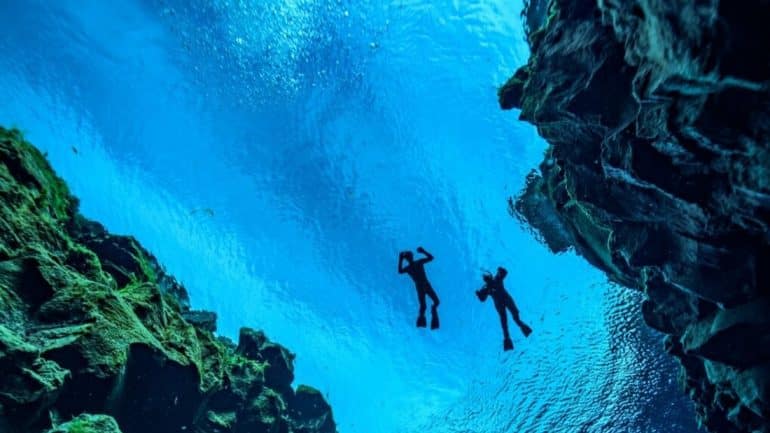
One of the fissures of Þingvellir, Silfra, lies underwater in Lake Þingvallarvatn, Iceland’s largest natural lake. It is a popular scuba and snorkelling site primarily due to its unique position and crystal-clear waters.
Geysir Geothermal Area
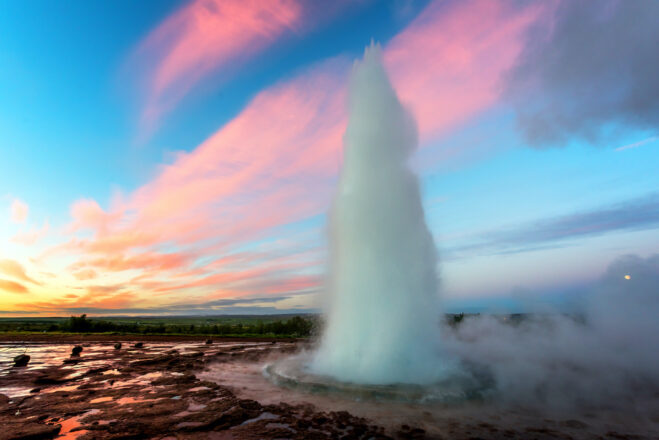
Geysir Geothermal Area is a term used for a part of Haukadalur Valley in South-West Iceland. The region is mainly known for its geothermal activity, which includes hot springs, bubbling mud pools, steam vents (or fumaroles) and erupting geysers.
The area’s name comes from a large, inactive hot spring, Geysir. ‘Geysir’ in Icelandic and Old Norse means “to gush”, and the English word ‘geyser’ is derived from this impressive feature. Though eruptions at Geysir are rare, when they happen, the geyser can fire boiling water up to 70 metres (230 ft) in the air.
Since Geysir is not mostly inactive, visitors to the Geysir Geothermal Area spend more time looking at another, more active geyser called Strokkur. The erupting hot spring, Strokkur, shoots jets of water every 5-10 minutes, reaching heights of around 15-20 metres (49-66 ft).
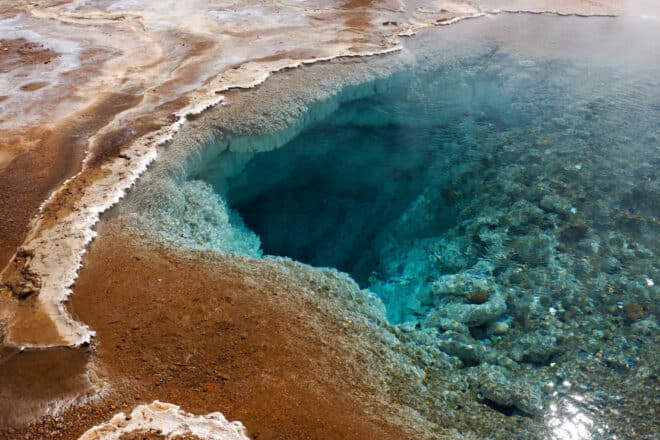
The area is also dotted with bubbling mud pools, hot springs, smaller geysers, and steam vents called fumaroles. The ground here is dyed by elements found in the earth; copper gives it a green hue, iron a red colour, and there are splashes of yellow from sulphur. The sulphur also gives the area its distinct egg smell, which few visitors might find challenging.
Parking at Geysir Geothermal Area is free, and there is no entrance fee to see the attractions. Across from the geothermal area is the Geysir-Centre, a building complex which includes a hotel, restaurant, souvenir and snack shop, swimming pool, and the Geysir Museum with multimedia shows.
Gullfoss Waterfall
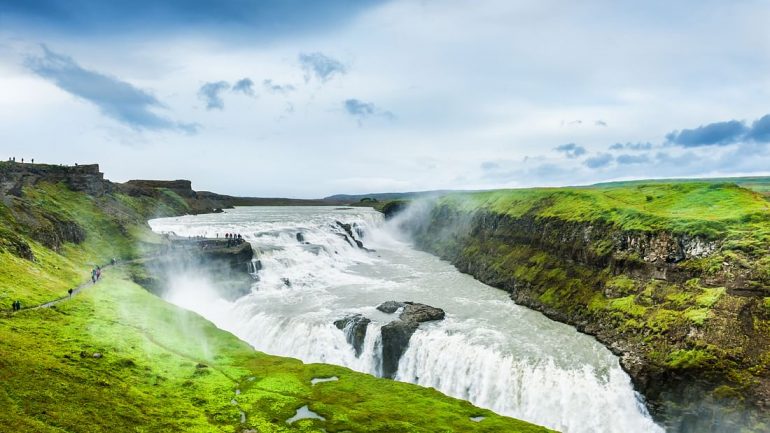
Gullfoss is Iceland’s most famous waterfall, found in the river Hvítá in South-West Iceland. The distance between Gullfoss and Reykjavík city is around 116 kilometres (72 mi), making it the furthest site on the Golden Circle route from the capital.
The waterfall is born in the river Hvítá, which is fed by meltwater from the glacier Langjökull. The river flows southwards before dropping down a wide, two-step “staircase” and then into a large canyon. There are two viewing platforms from which you can see the cascade, both of which have easy access for wheelchair users from the parking lot.
There is a visitor’s centre at Gullfoss with a café and a souvenir shop. The cafe at Gullfoss is open from 9:30-18:30, but entry to the waterfall itself is 24/7 and free.
Why is it Called the Golden Circle?
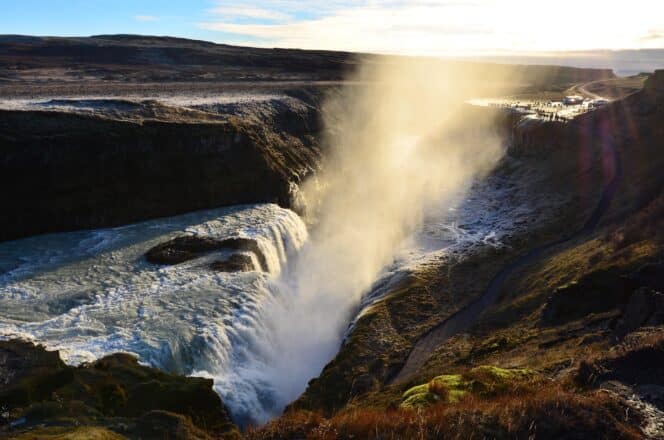
The name ‘Gullfoss’ means “Golden Waterfall” in Icelandic, and that’s how the Golden Circle gets its name. However, nobody knows why the waterfall is called Gullfoss. One explanation says that the name comes from the golden hue the water gets on sunny days.
The Best Way to See Iceland’s Golden Circle
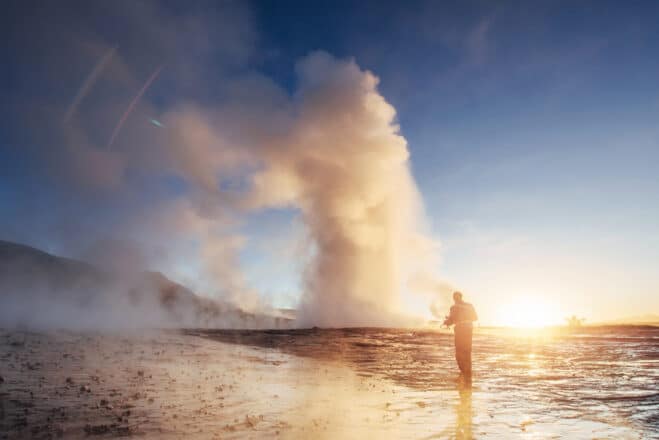
There are two ways to see the Golden Circle: on a self-guided tour or accompanied by a professional guide. The first option is perfect for those who like to have the freedom and flexibility to organise their day as they see fit. The latter option is great for those who want to have the guide’s expert knowledge at their fingertips.
When choosing the right Golden Circle tour, you should ask yourself how you would like to travel and if there is anything else you want to see. For example, do you want to visit other attractions aside from the Golden Circle, such as Jökulsárlón Glacier Lagoon or Snæfellsnes Peninsula? If so, a multi-day tour might be the right choice for you.
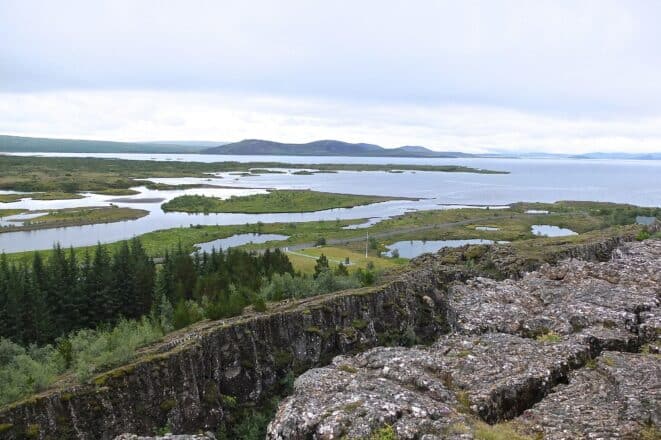
Creating a dream multi-day tour from scratch is easy with the help of Traveo’s local experts. You can also browse through ready-made itineraries for inspiration.
Traveo also has a good selection of single-day tours of the Golden Circle. Those are perfect for travellers who have already made other plans but want to spice up their holiday with an adventure.
In addition, you can find many tours of the Golden Circle mixed with adrenaline-rushing adventures. These include snowmobiling on a glacier, riding the Icelandic horse, whale watching, buggy riding, and hunting for the northern lights.
Driving Iceland’s Golden Circle: All You Need to Know
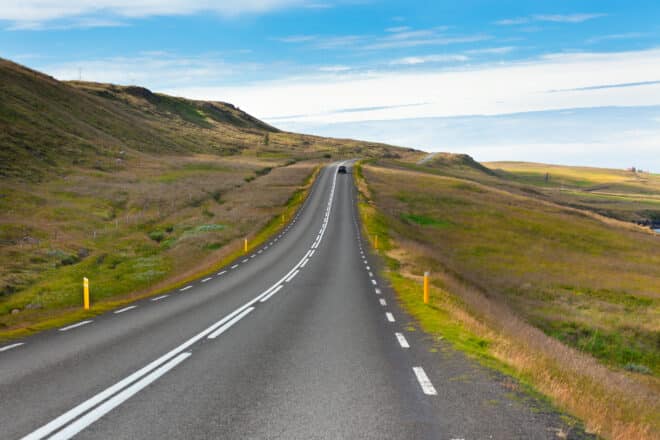
The attractions found on the Golden Circle route are all relatively close to Reykjavík city, the closest one, Þingvellir, being 40 km (25 mi) from the capital. The short distance from Reykjavík means you can easily travel the Golden Circle Route in one day.
The whole route covers around 230 kilometres (140 mi). So how long it takes to travel the Golden Circle depends on how long you spend at each stop. With selective stops, driving the route should take at least 6 hours; most tours on the Traveo booking page are 6-10 hours long.
When to Visit the Golden Circle?
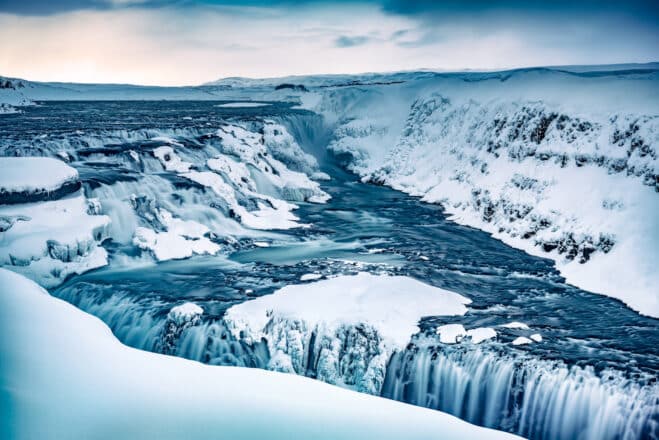
You can visit the Golden Circle the whole year-round. It is equally beautiful under the bright sun as it is blanketed in white snow.
Since the Golden Circle is Iceland’s most popular sightseeing route, you should expect some crowds here (However, it is nothing compared to popular places in Europe).
Large coach buses filled with tourists tend to arrive at similar times. So if you are doing a self-drive tour or travelling with a private guide, try to visit outside these times to avoid the crowds.
- The best time to visit Þingvellir National Park is before 10 AM or after 12 PM
- The best time to visit Geysir Geothermal Area is before 12 PM or after 2 PM
- The best time to visit Gullfoss Waterfall is before 11 AM or after 2 PM
Is the Blue Lagoon Part of the Golden Circle?
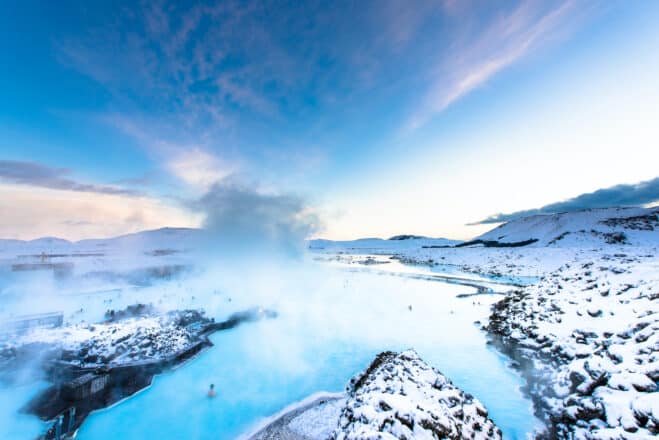
Iceland’s Blue Lagoon is located west of Reykjavík and is, therefore, not a part of the Golden Circle. However, you can take a look at Traveo’s custom multi-day tours since they all provide the option of adding the Blue Lagoon to your holiday.
What to Wear When Visiting Iceland’s Golden Circle?
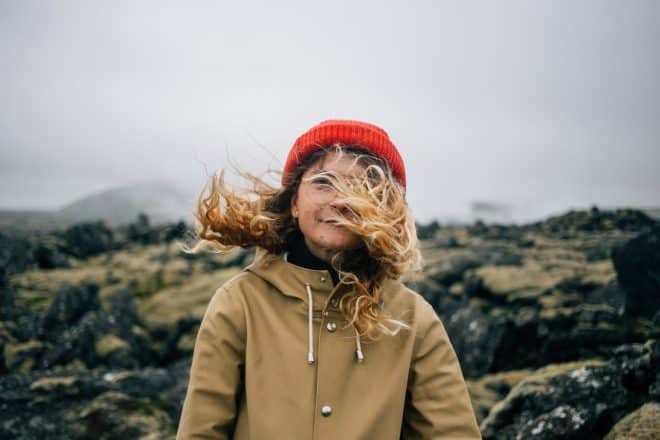
All of the attractions on the Golden Circle route are outside, so dressing warmly is key if you want to enjoy them to the fullest. The weather in Iceland is very fickle, so it is best to be prepared for both hot and cold temperatures as well as both wind and shine. A good tip for when you are visiting the Golden Circle is to wear layers of clothes so you can easily take something off in case the sun decides to grace us with a visit.
For summer visits to the Golden Circle here is what we recommend:
- Long or short sleeve t-shirt as a base layer
- Warm jumper. Preferably either fleece or wool (perhaps a traditional “lopapeysa”)
- Lightweight, wind and waterproof jacket.
- Lightweight, wind and waterproof trousers
- A warm hat, scarf and gloves or mittens (yes, even in the summer)
- Good waterproof shoes which you can walk in, such as hiking boots or trekking shoes.
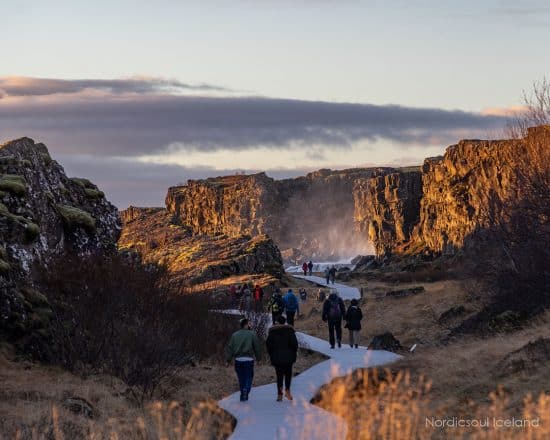
For winter trips to the Golden Circle we recommend:
- Woollen underwear such as long johns, thermal long sleeve shirts and warm socks as your base layer.
- Warm jumper, either fleece or wool.
- Warm wind and waterproof jacket.
- Outdoor trousers.
- A warm hat, scarf and gloves or mittens.
- Good winter boots. Waterproof with rubber sole or treads designed to grip icy surfaces, or waterproof shoes and crampons.
Other attractions on or near the Golden Circle
The Golden Circle is an excellent introduction to Icelandic nature and culture. However, those who would like to explore further can take a little detour to visit some lesser-known attractions in the region.
Kerið Crater Lake
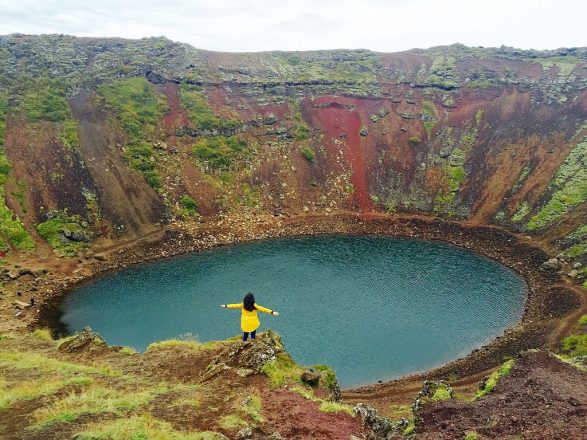
Kerið is a volcanic crater containing a small lake. What makes it so unique and worth a detour from the Golden Circle is its vivid colours. The crater’s bright red walls stand in stark contrast to the aquamarine water and burst of green vegetation. A pathway will lead you around the crater’s rim, but you can also go in for a better look at the lake.
Scientists believe Kerið was formed around 6,000 years ago in a series of volcanic eruptions when a volcanic cone emptied its magma reserve and collapsed into itself. Later on, the empty crater filled with groundwater, creating this beautiful lake.
When visiting Kerið on a self-drive tour, please note that there is a small entrance fee to help the landowners protect the crater. Also, note that there are no concessions or restrooms at Kerið, unlike many other locations on the Golden Circle route.
Secret Lagoon
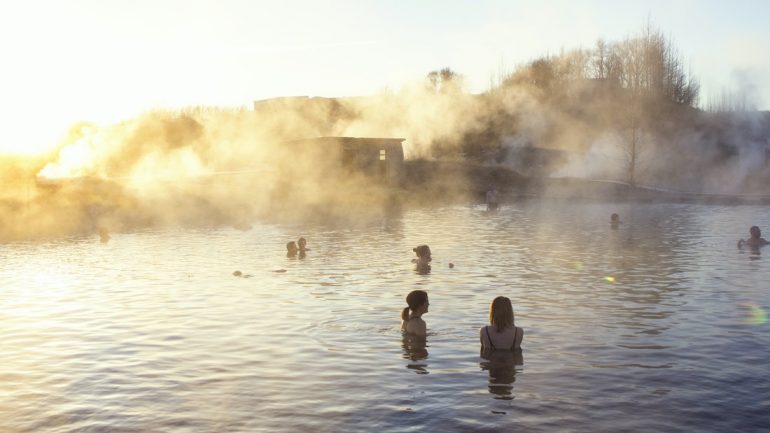
Those looking for relaxation during their Golden Circle trip should check out the Secret Lagoon. This relaxing spa is situated in a geothermal valley. Surrounding it are billows of white steam that rise from the ground, smaller bubbling natural pools, and even a tiny, erupting geyser.
The warm water stays at 38-40 Celsius all year round, making the Secret Lagoon a perfect addition to your Golden Circle trip, no matter when you visit. It is a great spot to end the day, either under the ethereal glow of the midnight sun in the summer or the dancing northern lights in the winter.
Laugarvatn Fontana Geothermal Spa
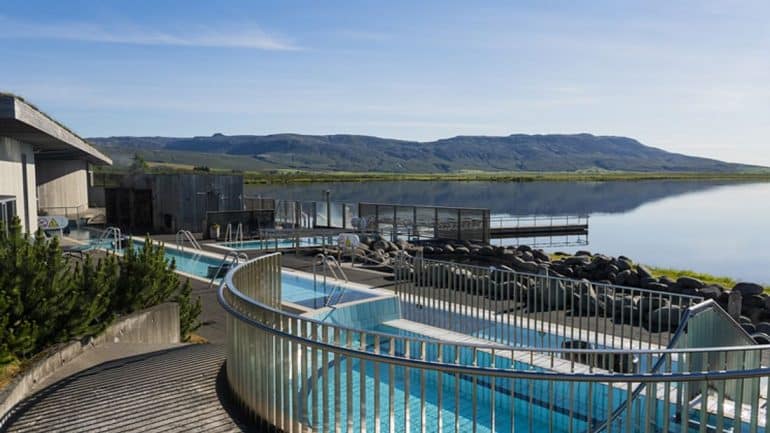
Another fantastic spa on the Golden Circle route is Laugarvatn Fontana. This luxurious site lies on the banks of Lake Laugarvatn, offering guests excellent views and the option to take a dip in the cool lake.
Laugarvatn Fontana consists of interconnected baths and steam rooms, perfect for relaxation after spending time on the road. Onsite, you’ll also find the Laugarvatn geothermal bakery, where they make ‘lava bread’.
Where to Eat on the Golden Circle?
There are several restaurants near the Golden Circle. Most are open both during lunch and dinner, with some offering breakfast as well. Guided tours offer lunch breaks but where that will be is up to the tour guide. You are also free to bring lunch or a snack with you on guided tours.
If you are doing a self-drive tour, you will have to choose where to stop, and you have plenty of options. Below is a list of a few of our favourite places in or near the Golden Circle.
Geysir restaurant Offering great views of the Geysir Area, this top-notch restaurant provides good services, a cosy atmosphere, and excellent food.
Friðheimar Tomato Farm Friðheimar is a tomato farm and restaurant offering an exquisite dining experience in the greenhouse. Hhere you can enjoy delicious meals amongst the tomato plants.
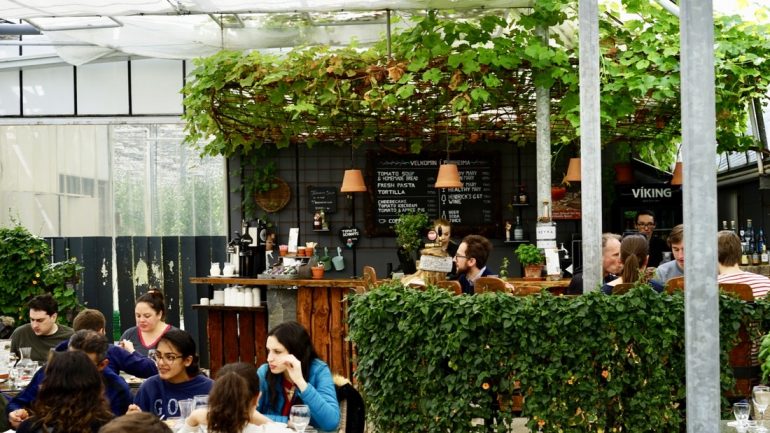
Súpa Geysir Súpa is Icelandic for “soup”, making this an excellent stop for travellers in the Geysir area on a cold day. All soups are gluten-free, made fresh every morning, and delicious.
Farmers Bistro Farmers Bistro is a charming little dining establishment in Iceland’s only mushroom farm, Flúðasveppir, offering items with ingredients grown on-site.
Efstidalur Farm Efstidalur is a working cattle and dairy farm emphasising “farm-to-table”. The most popular item on the menu is arguably their ice cream which some have described as the best in the country.
Map of the Golden Circle Sightseeing Route
Summary
Þingvellir National Park, Geysir Geothermal Area and Gullfoss Waterfall make up the Golden Cirlce, and they are definitely worth a visit. It is the ultimate Icelandic experience; it has geothermal activity, geysers, lava fields, history, and a stunning waterfall. It is an easy day tour from Reykjavík city but also en route to other great attractions on the South Coast for those on a multi-day tour.
Because of this, it is an extremely popular route, and it can sometimes feel a bit crowded, especially in the summer. But what popular visitor attraction isn’t? So the best way to avoid crowds is to avoid the peak hours when the larger coach buses visit these attractions. Most of these buses leave the city between 8 – 10 AM and arrive at the first location — usually Þingvellir National Park — about an hour later.
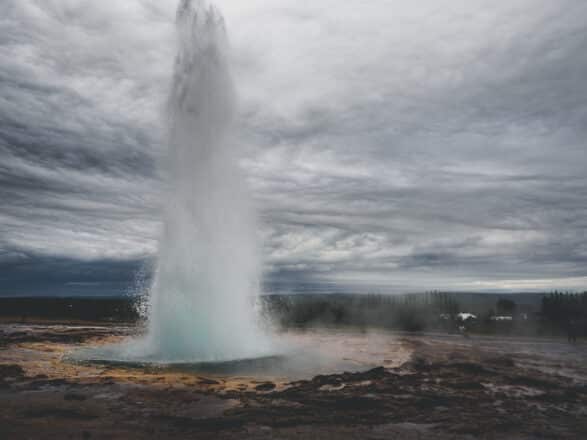
You can explore the Golden Circle on a self-drive tour or with a professional guide. Traveo offers both small-group tours and private guides for those who wish to have local knowledge at their fingertips.
When visiting, dress in warm and waterproof clothes and prepare for all types of weather, even in the summer.
______________________________________________________________________
Have you visited the Golden Circle? When did you go, and what did you think about it? Are you planning a trip? Let us know in the comments below.

